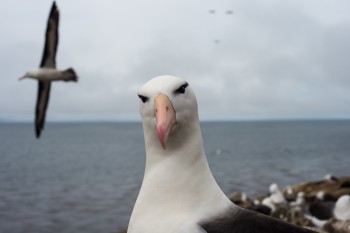Matthew Savoca (Graduate Group in Ecology, University of California, Davis, California, USA) and Gabrielle Nevitt write in the Proceedings of the National Academy of Sciences (PNAS) on a mutualistic interaction between procellariiform seabird species using dimethyl sulfide as a foraging cue and primary producers.
“This study demonstrates that dimethyl sulfide, a chemical cue involved in global climate regulation, mediates a tritrophic mutualistic interaction between marine apex predators and primary producers. Our results imply that marine top predators play a critical role in maintaining both ocean health and global climate. Our results highlight the need for more collaboration and discussion between micro- and macroscale biologists working on global issues in the Southern Ocean.”
The paper’s abstract follows:
“Tritrophic mutualistic interactions have been best studied in plant–insect systems. During these interactions, plants release volatiles in response to herbivore damage, which, in turn, facilitates predation on primary consumers or benefits the primary producer by providing nutrients. Here we explore a similar interaction in the Southern Ocean food web, where soluble iron limits primary productivity. Dimethyl sulfide has been studied in the context of global climate regulation and is an established foraging cue for marine top predators. We present evidence that procellariiform seabird species that use dimethyl sulfide as a foraging cue selectively forage on phytoplankton grazers. Their contribution of beneficial iron recycled to marine phytoplankton via excretion suggests a chemically mediated link between marine top predators and oceanic primary production.”

Black-browed Albatrosses on Saunders Island, photograph by Anton Wolfaardt
Click here for a popular account of the publication in Science Daily.
Reference:
Savoca, M.S. & Nevitt, G.A. 2014. Evidence that dimethyl sulfide facilitates a tritrophic mutualism between marine primary producers and top predators. Proceedings of the National Academy of Sciences 111: 4157–4161.
John Cooper, ACAP Information Officer, 16 April 2014

 English
English  Français
Français  Español
Español